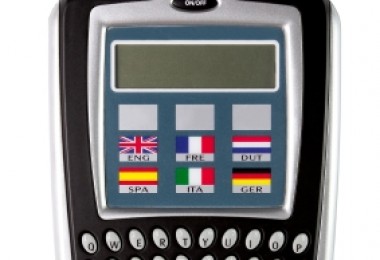Translation Romani has decided to maintain use of the word Romani in all language versions of this website, inclusively and in reference both to the language and people of all the diverse ethnic communities throughout the world, i.e. Roma, Sinti, Manuš, Calé, Romanichal, Kalé, and many others. Please read the important notes from our translators for explanations and other translations currently in use locally, nationally or regionally.
Close this box.
Machine translation (MT), sometimes called "automatic translation", has been rapidly gaining visibility in its commercialized form over the past few years. To some extent, the escalating volume of content generated by official multilingualism (UN, EU) or bilingualism (Canada), and the increasing number of languages represented and active on the Web, have assisted machine translation researchers in better understanding the patterns and probabilities of natural language use in context and in translation. This information is useful for predicting and improving the quality of output generated by the simple commercial MT systems most familiar to Web users today, in particular Google Translate.
Historically, MT research began in earnest during the 1950s, with high expectations of superior results, that is to say "fully automatic high quality translation of unrestricted text". The 1966 ALPAC Report would dash these hopes and reduce funding, but still encourage researchers to pursue the domain of Computer-Assisted Translation (CAT) technologies. In Canada, the METEO MT System became one of the best examples of successful machine translation in use. Until the 1990s, most MT systems built were based on the Rule-Based approach, which requires implementation of extensive dictionaries, copious grammars (rules and exceptions) and programs, in order to "teach" the system how to produce grammatically correct language in specific subject domains. Since the 1990s, however, Corpus-Based approaches to machine translation (Example-Based and Statistical) have dominated the research landscape and commercial systems. They make use of bilingual and multilingual corpora and alignment techniques, creating segment matches in EBMT and applying statistical analysis and probability models in SMT.
Machine translation and human translation are both in practice professionally, but for different reasons and circumstances. MT is used in cases where context and subject matter (for example, weather, technical manuals, product specifications) can be restricted tightly enough so that translated output contains minimal errors. Pre-editing (controlled language when writing source content) and post-editing (human revision of MT output) are necessary for adequate quality and subsequent dissemination of the translated texts. Unlike for revision and editing of human translated texts, machine translated texts require post-editors to have expertise in understanding the unique types of errors a machine is likely to make. For example, machines cannot be expected to "understand" texts as humans do, nor to be able to resolve linguistic and cultural dilemmas of ambiguity. Correct lexical and syntactic matches between languages are not always easily found, and extra-linguistic knowledge of the world is difficult to codify and program. On the other hand, popular use of online MT systems is increasing, and generally reflects the need for simple gist, or "rough" translation output, where users only seek a basic idea of the content. Machine translation has typically been an area of study within Computational Linguistics and Artificial Intelligence. Currently, speech-to-speech translation and mobile translation are important areas of research. As recent collaborative initiatives such as the 2010 AMTA and ATA conferences in the United States have demonstrated, the machine translation and human translation professional sectors are contributing with their respective areas of expertise to meet the demand for growing translation needs worldwide, in particular on the Web.
References:
Commonsense Advisory, "Resources--Glossary", online.
Hutchins, John. "Publications on machine translation, computer-based translation technologies, linguistics and other topics." Web. http://www.hutchinsweb.me.uk/
Hutchins, John. "The development and use of machine translation systems and computer-based translation tools" (1999). Available online.
Baker, Mona and Gabriela Saldanha (eds), Routledge Encyclopedia of Translation Studies. 2nd Edition, London / New York: Routledge, 2009.
Gambier, Yves and Luc Van Doorslaer (eds), Handbook of Translation Studies. Vol. 1, Amsterdam / Philadelphia: John Benjamins Publishing Company, 2010. Also online.
Guzmán, Rafael, "Manual MT Post-editing", Translation Journal (2007). Available online.
Nirenburg, Sergei, Harold Somers, and Yorick Wilks (eds), Readings in Machine Translation, Cambridge, MA (U.S.): MIT Press, 2003.
Somers, Harold (ed), Computers and Translation--A translator's guide, Benjamins Translation Library, Amsterdam / Philadelphia: John Benjamins Publishing Company, 2003.

komputeri (Kalderash)
kompjutero (Gurbeti)
o komjuteri (Lovari)
Komjuteri (Xoraxane)


